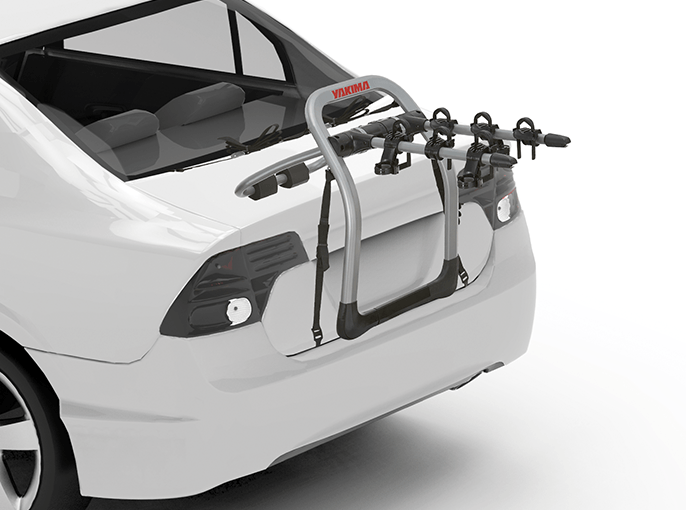Yakima FullBack vs HalfBack
If you need a way to get your bikes to the trails, but your car doesn’t have a hitch receiver, tow ball or roof racks, a boot or hatch rack system is a great solution.
As far as boot racks go, the Yakima HalfBack and FullBack both serve their purpose well—but how do they compare? To make it easier to weigh up the pros and cons of each system, here’s a rundown of how the HalfBack and FullBack boot racks work and the key differences between the two rack systems.
How do they work?
The Yakima HalfBack and FullBack are very similar boot rack systems. While you will get a couple of extra features if you opt for the slightly more expensive FullBack, functionality-wise, they both work the same way.
Both models come in 2-bike and 3-bike variations that attach to the boot of your car by resting the padded rack on the boot and connecting two upper and two lower straps to the top and bottom boot seams. An adjustable arm that uses a simple twist and lock mechanism can then be set to the right angle to suit your car.
Installing the rack is pretty straightforward and should only take about 5 minutes without needing to use any tools, however it’s important to get it right—while a properly installed boot rack shouldn’t move, a poorly installed rack can move around and could cause damage to your bikes or car. It’s worth watching the Yakima how-to videos before installing it for the first time to make sure you do it properly.

Are they easy to use?
Loading the bikes onto either rack is pretty simple too. They just need to be lifted onto the rack arm and rested in the cradle on the top tube, then secured with the rubber zip-lock straps. A good tip that will make it easier to load your bikes is to set the rack angle so it’s slightly elevated. This will allow the bike handlebars to slot in nicely next to each other.
The racks only work with bikes with a horizontal top tube, but it’s no biggie as you can always buy a false top tube to make your bike compatible if needed. You’ll most likely also need to invest in a PlateMate (which costs approximately $30) to make sure your number plate isn’t obstructed.
Either rack is great if you like to go for the occasional weekend ride, but if you’ll need to use it several times per week, you’ll probably get tired of attaching and removing it all the time. Having said that, while it’s primarily designed for occasional use, leaving it on permanently is still an option as it’s easy to fold down the arm when not in use, and you’ll still be able to access your boot with the rack attached.
So what’s the difference?
The FullBack includes a few additional features that you don’t get with the HalfBack, which is reflected by the slightly higher price tag. These include:
- A Same Key System (SKS) lock to protect your bikes from theft.
- A safety leash that secures around the rack to work as a back-up system in case the straps aren’t installed properly.
- A cinch strap that you can use to wrap around the bikes to hold them extra tight, which is great when travelling a long distance or at high speeds.
- A black painted finish.
Each rack model measures in with the same dimensions (L 76.2 cm x W 63.5 cm x H 55.9 cm), but varies slightly in terms of weight, bike capacity and price. This table shows you how each model differs:
| HalfBack 2 | HalfBack 3 | FullBack 2 | FullBack 3 | |
| Weight | 9.5kg | 10kg | 10kg | 10.4kg |
| Bike capacity | 2
(31.75kg total max weight) |
3
(40.8kg total max weight) |
2
(31.75kg total max weight) |
3
(40.8kg total max weight) |
| RRP (inc. GST) | $359 | $399 | $409 | $449 |
The model you choose will largely depend on what you value most in a rack, but overall, each model is a good low-cost and compact option that will get the job done.
View the full Yakima boot/hatch range
Last updated: 20th October 2020